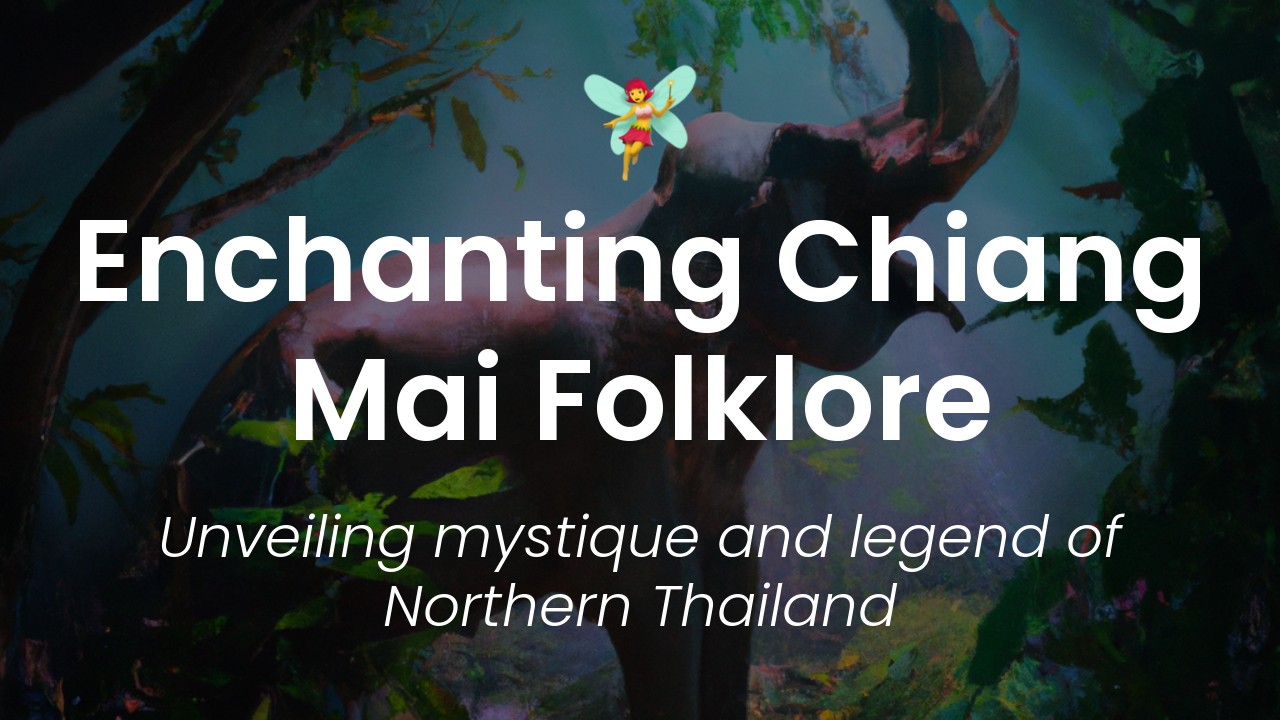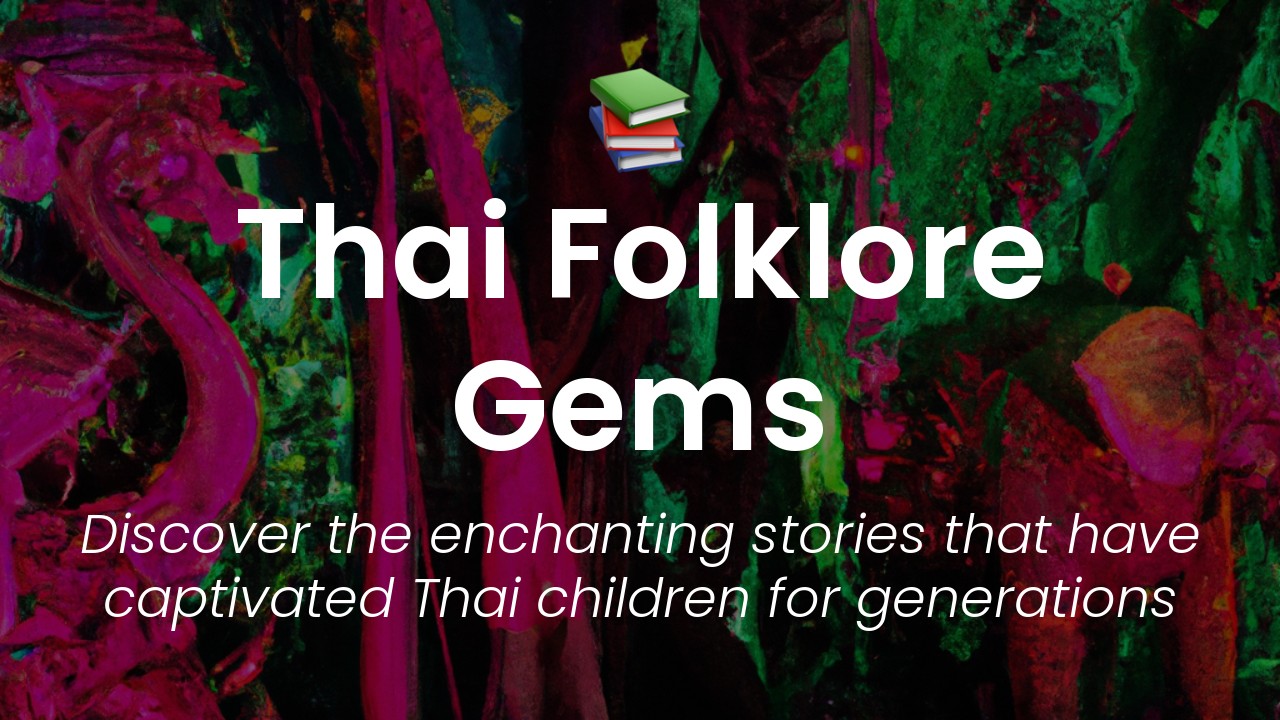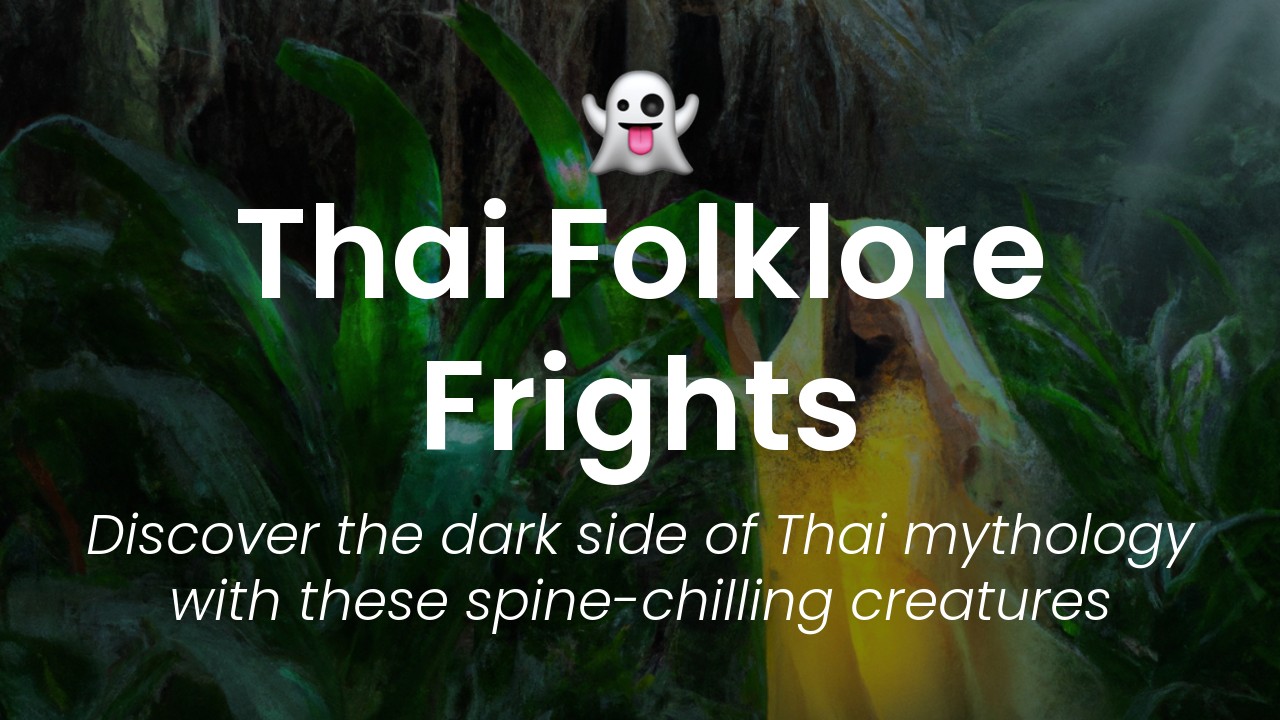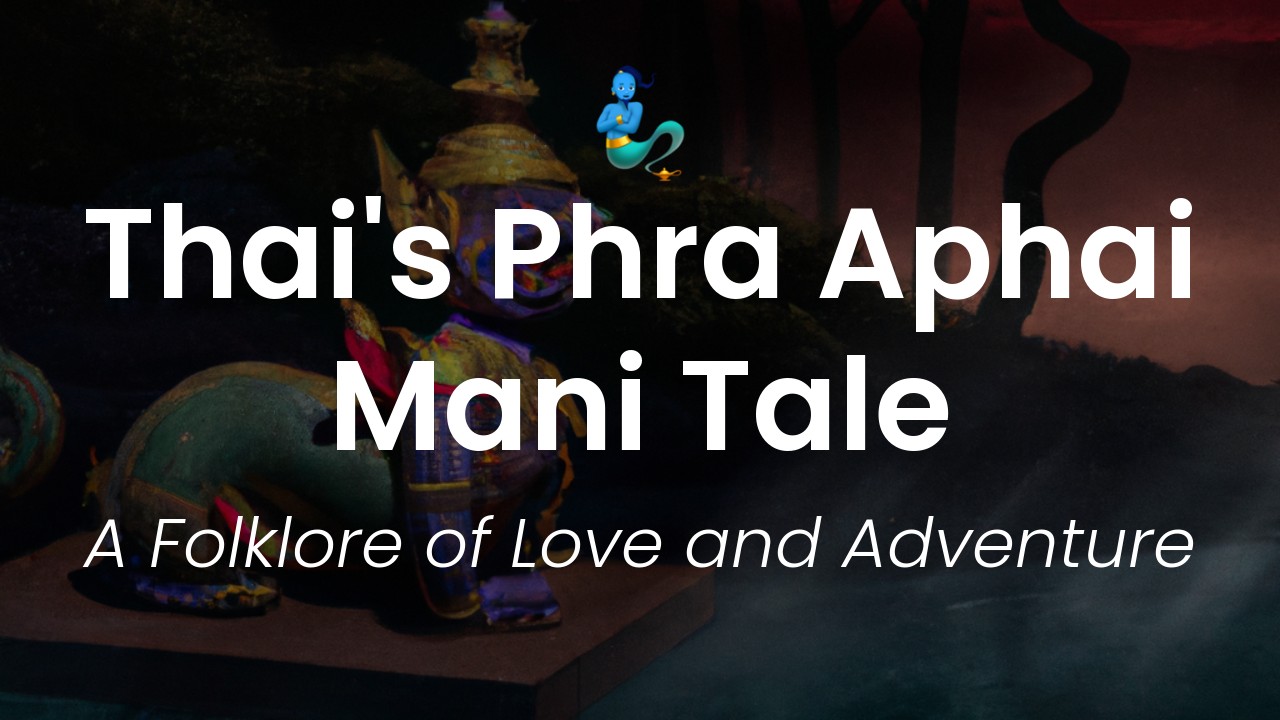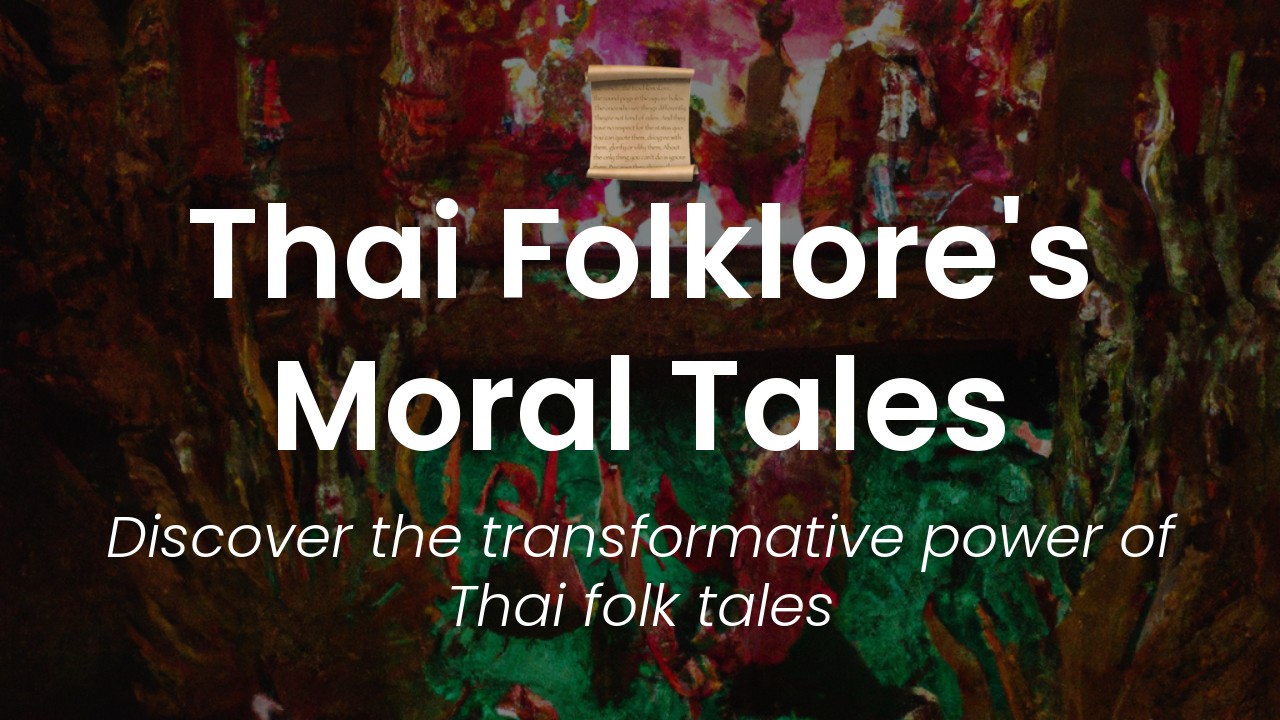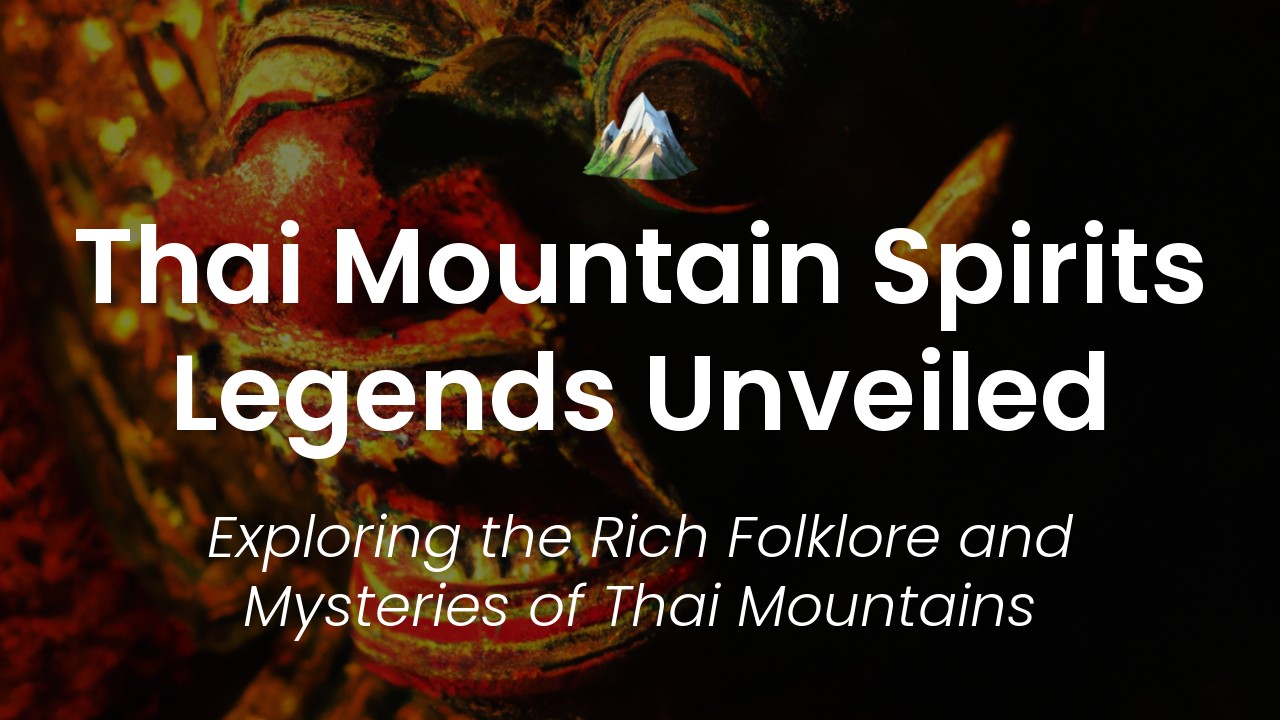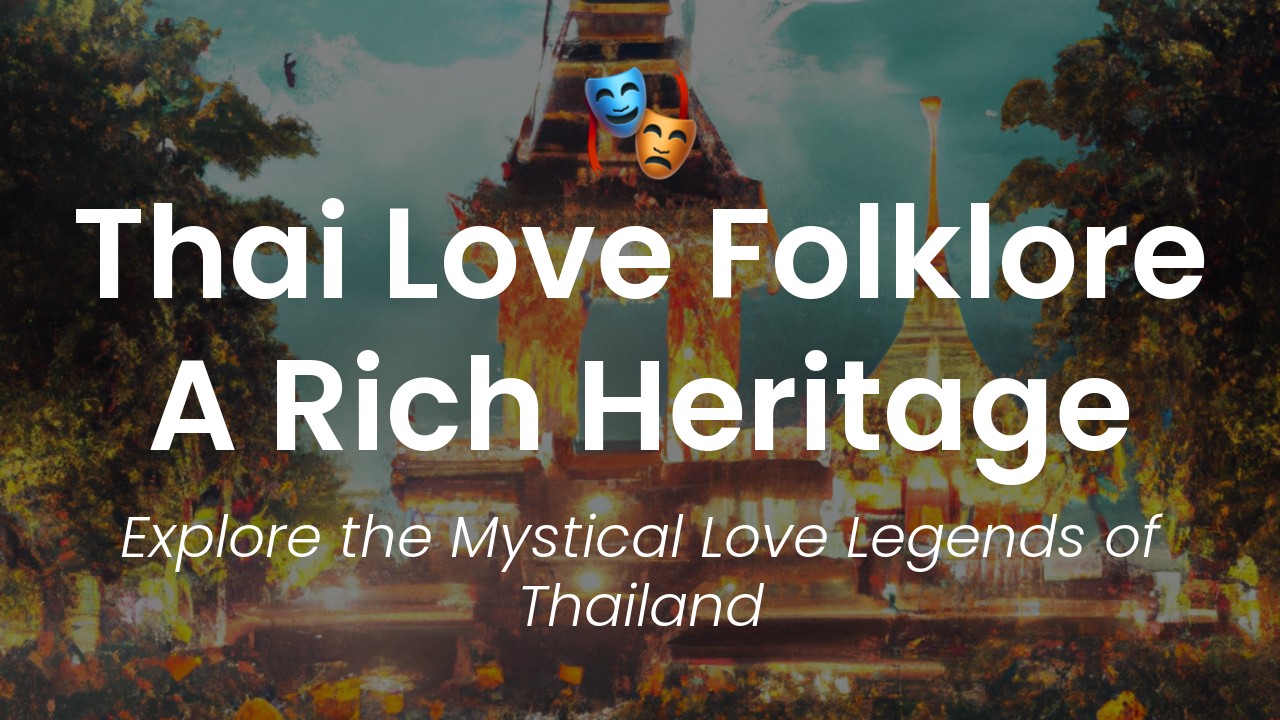As a proud Thai woman with a passion for my country's culture and history, I'm always eager to share my knowledge and insights with the world. Today, I'd like to take you on a journey to the enchanting city of Chiang Mai, nestled in the lush mountains of Northern Thailand. This vibrant city is a feast for the senses, with its colorful markets, ancient temples, and delicious cuisine. But there's another side to Chiang Mai that is less well-known – its rich folklore traditions.
For centuries, the people of Chiang Mai have passed down tales of mythical creatures, heroic deeds, and supernatural encounters. These stories blend together elements of Buddhism, Hinduism, and animism, creating a unique cultural tapestry that is truly one of a kind. From the mischievous spirits that haunt the city's back alleys to the brave warriors who stood up against foreign invaders, Chiang Mai's folklore tales offer a fascinating glimpse into the beliefs and values of its people.
In this article, I'll introduce you to a few of my favorite Chiang Mai folklore tales. I'll share the stories of legendary figures like Nang Nak, the ghostly wife who longs for her husband's return, and the serpent kings who rule over the rivers and forests. I'll also delve into the deeper meanings behind these tales, exploring how they reflect important aspects of Thai culture and spirituality. So sit back, relax, and let me transport you to the magical world of Chiang Mai folklore.
The Legend of the Naga
In Thai mythology, snakes are revered as powerful creatures, and none more so than the Naga. The Naga is said to be a serpent-like being with supernatural powers that inhabit bodies of water throughout the country. In the Northern city of Chiang Mai, the Naga has deep cultural significance and sits at the heart of many local traditions.
One origin story of the Naga in Chiang Mai tells of a 16th-century king who commissioned the construction of a new city, a task that included the excavation of a moat. During the excavation, workers uncovered a small object that they could not identify, but that seemed to have great significance. The king called in his wise men, who identified the object as a Naga. They warned that harming the Naga would cause great misfortune, but failing to show it proper reverence would be even worse.
The king and his people eventually came to value and respect the Naga, and they built a shrine to honor it near the moat. This tradition has been carried on to this day, and visitors to Chiang Mai can visit many shops and restaurants that pay homage to the Naga.
The Tale of the "Kuman Thong"
A Kuman Thong is a small statue of a child that some believe has supernatural powers. The story of the Kuman Thong dates back to ancient times, and the belief in their power persists today in many parts of Thailand. The tradition of Kuman Thong is especially strong in Chiang Mai, where visitors can find these statues in many shops and tourist attractions.
According to legend, the Kuman Thong is said to be created from the body of a stillborn child. The body is taken to a temple and prepared in a manner similar to that of a living child, and the resulting statue is said to have the power to bring good luck and fortune to its owner. Some believe that the Kuman Thong is even capable of protecting its owner from harm.
In recent years, the practice of creating Kuman Thong has come under fire from animal rights activists, who allege that some practitioners use the remains of monkeys or other animals in the construction of the statues. However, many in Chiang Mai continue to hold the belief that the Kuman Thong can have great power, and the tradition remains an enduring part of Thai folklore.
The Story of the "Phi Pop"
Phi Pop is a term used in Chiang Mai to describe a ghostly presence or a spirit that resides in and around the city. The Phi Pop is often thought to be a manifestation of the many spirits that inhabit the surrounding mountains, and is revered as a powerful and mysterious force.
One common belief about the Phi Pop is that it can be seen in the form of a beautiful woman who appears from nowhere and then disappears without a trace. Many people have claimed to have encountered the Phi Pop, and some even claim to have been led to hidden treasures by the spirit.
There are many other tales associated with the Phi Pop, including stories of the spirit carrying messages from ancestors to the living, or protecting the city and its inhabitants from danger. Regardless of their specific beliefs, the people of Chiang Mai hold the Phi Pop in high regard, and the spirit remains an important part of their culture.
The Tradition of the Yi Peng
Yi Peng is an annual festival that takes place in Chiang Mai, and it is one of the most visually stunning and spiritually important celebrations in all of Thailand. The festival takes place during the full moon of the 12th lunar month, usually in November.
The centerpiece of the Yi Peng festival is the release of thousands of sky lanterns, which fill the sky with a glowing, ethereal light. In addition to the lanterns, the festival features parades, music, dance, and other cultural events.
The origins of the Yi Peng festival are rooted in Buddhist tradition, and the festival is marked by acts of gratitude and contemplation. For many, it represents a time to let go of the troubles of the past and to make a fresh start for the coming year.
The Myth of the "Penanggalan"
Another powerful figure in Thai folklore is the Penanggalan, a creature that is part-woman and part-vampire. The Penanggalan is said to prey on children and pregnant women, often abducting them in the dead of night.
According to legend, the Penanggalan is able to separate its head from its body at night, allowing it to fly through the air and hunt its victims. During the day, the creature must reattach its head to its body, which can be a difficult and painful process.
The Penanggalan is widely feared throughout Thailand, and many people have their own stories of encounters with the terrifying creature. Some believe that the Penanggalan is capable of becoming trapped in a circle of salt, and many households keep salt on hand to use as a protective barrier.
The Folklore of the Lanna Kingdom
The Lanna Kingdom was a powerful and influential state that existed in present-day Northern Thailand for hundreds of years. During this time, the people of the region developed a rich and vibrant culture that is still celebrated and revered today.
One of the most important elements of Lanna culture is the music and dance tradition. The Lanna people have created many beautiful and intricate dance forms, often accompanied by live music played on traditional instruments.
Another important part of Lanna culture is its cuisine. Lanna cuisine is characterized by flavorful spices, fresh herbs, and an emphasis on locally sourced ingredients. Visitors to Chiang Mai can experience the unique tastes and textures of Lanna cuisine in many of the city's restaurants and food stalls.
The Mystery of the "Hintha Bird"
The Hintha bird is said to be a mythical creature that originates in the ancient city of Bagan in present-day Myanmar. The bird is said to be a talisman of good luck and prosperity, and it is widely revered throughout Southeast Asia.
In Chiang Mai, the Hintha bird has a particularly special place in the culture. Many people believe that the bird has the power to bring prosperity to businesses, and retailers often display images of the bird in their shops.
Despite its cultural significance, the origins of the Hintha bird remain shrouded in mystery. Some believe that the bird may have been inspired by a real species of bird that lived in the region centuries ago, while others believe that the Hintha is an entirely fictional creature.
Regardless of its origins, the Hintha bird remains an important and beloved symbol of Chiang Mai and the wider region. Visitors to the city can find representations of the bird in many shops, temples, and other cultural sites.
Conclusion
Chiang Mai is a city steeped in tradition, and its folklore and mythology provide a fascinating glimpse into the lives and beliefs of its people. From the powerful Naga to the mythical Penanggalan, the stories and legends of Chiang Mai are part of what makes the city such a unique and enchanting destination. Visitors to Chiang Mai can immerse themselves in these traditions, experiencing the vibrant history and culture of Northern Thailand firsthand.

